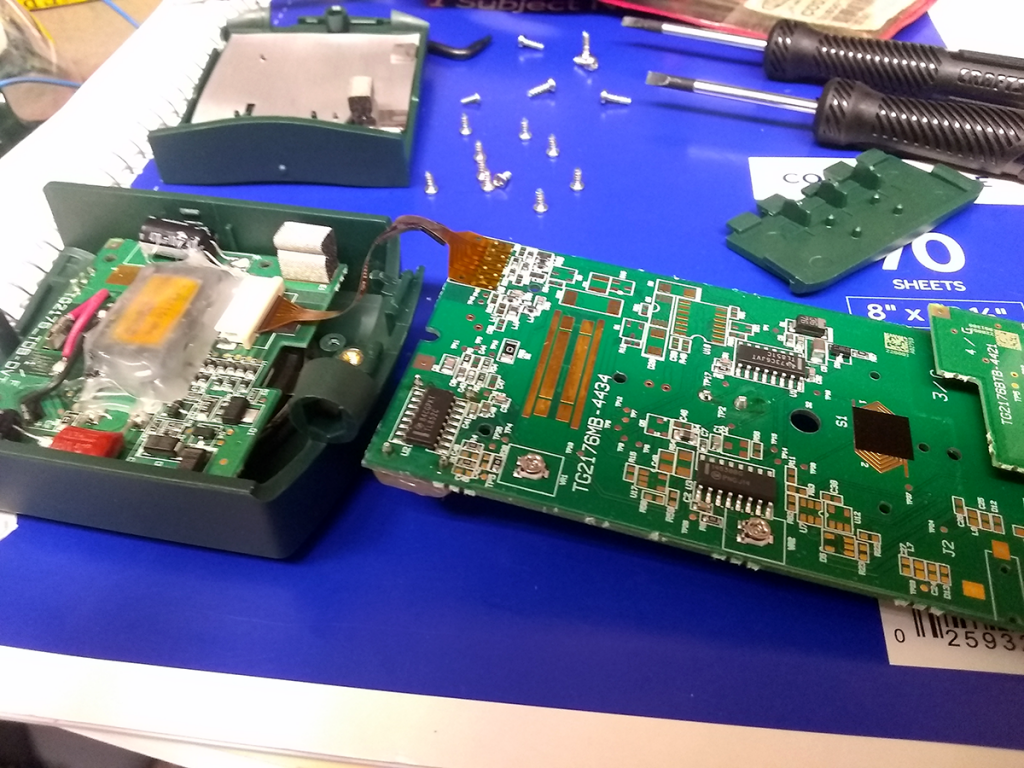
Ah, the printed circuit board. Svelte. Densely packed with teeny marvels of modern electronics. Those parts big enough to be labeled usually require magnification to read the text. The really little ones? It’s not really possible to replace those anyway, so just trust that they’re working as intended.
Until the whole gizmo isn’t working as intended, of course.
When that happens, it’s time to make an assessment of what can be fixed. Sometimes it’s a loose wire. Sometimes it’s a frayed cord, or a bad switch that’s not part of the circuit board itself. Not that these are likely, but it’s best to be thorough.
Assuming you can get the housing open to inspect it. These suckers aren’t built with repairs in mind, given that purchasing a whole new item is less expensive than the cost of labor plus the replacement value of what’s 98% of the whole item. So many tiny screws. So many snap-fit plastic parts. At some point you realize how much thought and effort went into designing this object for quick assembly, and how little went into ease of disassembly.
Pictured above, a faulty motion sensor, has no obvious loose connections or broken parts. It simply fails to collect consistent data, with erratic drop-outs punctuating the signal. Oh, well. Maybe it’s good for parts?